A modular microfludics solution to allow reuse of a dispensing head.
Calcivis had developed an innovative active tooth decay imaging system and required help to redesign the previous entirely disposable device applicator into an improved and wholly or partially reusable design.
For regulatory reasons it was important to Calcivis that the core of the device remained unchanged, and that included the previously designed main housing.
In addition to the desire to cut down on the disposable parts, i4pd were tasked with improving the dispersion and coverage of the protein fluid onto a patients tooth, and optimisation of the design to exclude ambient light.
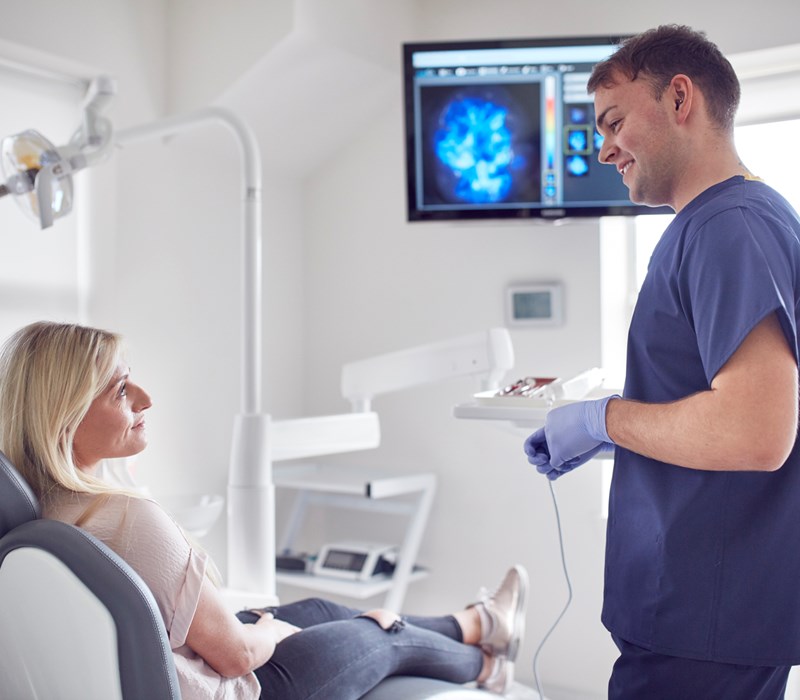
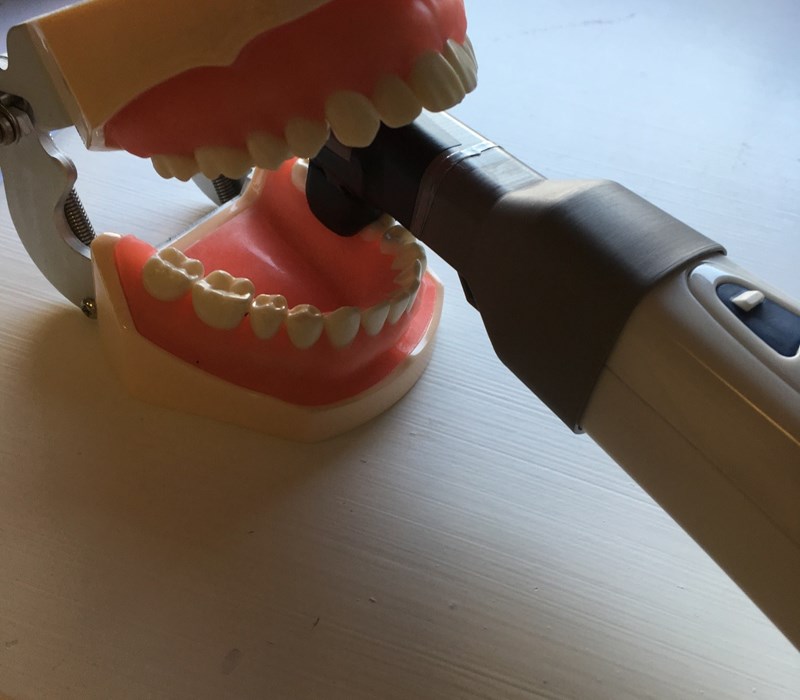
There were a series of challenges to be addressed.
Enhancement of the protein delivery system could only really be achieved through physical testing of many design variants. This was a challenging task as the system utilised microfluidic channels to deliver a fine mist of the protein on a tooth during each exposure.
Similarly, assessment of the elements that were intended to be flexible and conform to tooth surfaces would be constrained to an extent by prototype materials and processes.
There was also the overriding constraint of having to work around an existing system to achieve the reusability and optimised fluid delivery which needed careful consideration to avoid bulking out the product.
The previous design incorporated protein delivery channels formed between two parts which were ultrasonic welded together – this meant that the entire applicator had to be disposed for hygiene reasons.
The i4pd team fairly quickly identified an alternative product architecture for the device applicator where the protein fluid delivery channels could be separated from the larger main applicator moulding. This meant that the large moulding could be re-used (after disinfection via autoclaving), whilst the smaller parts are disposed. This Fluid Delivery module comprised two parts as shown on the right.
In addition, we conceived of a separate part that carries a soft conformable moulding to exclude ambient light, and this Light Baffle carrier clips onto the Fluid Delivery module. This approach provides flexibility to interchange alternative parts should they be require for differing tooth types.
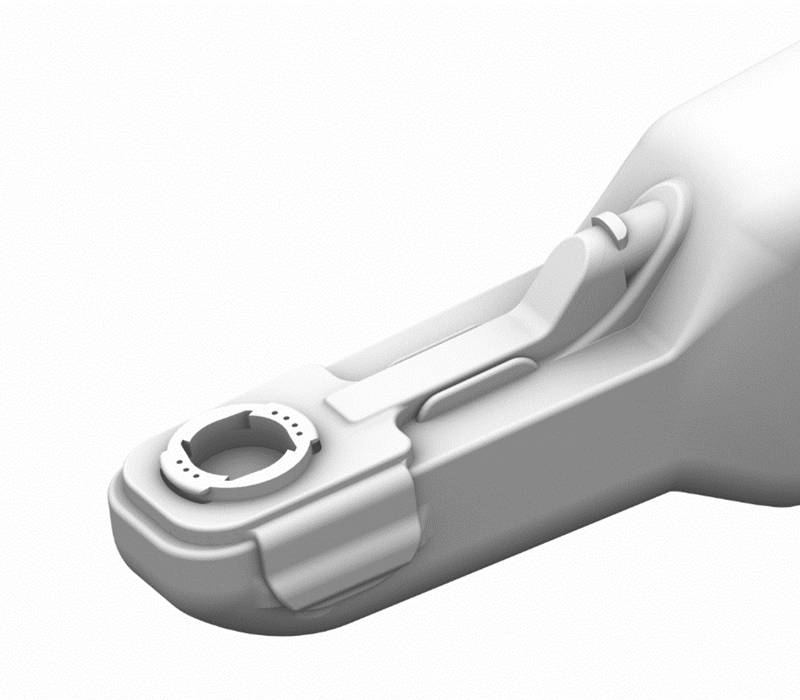
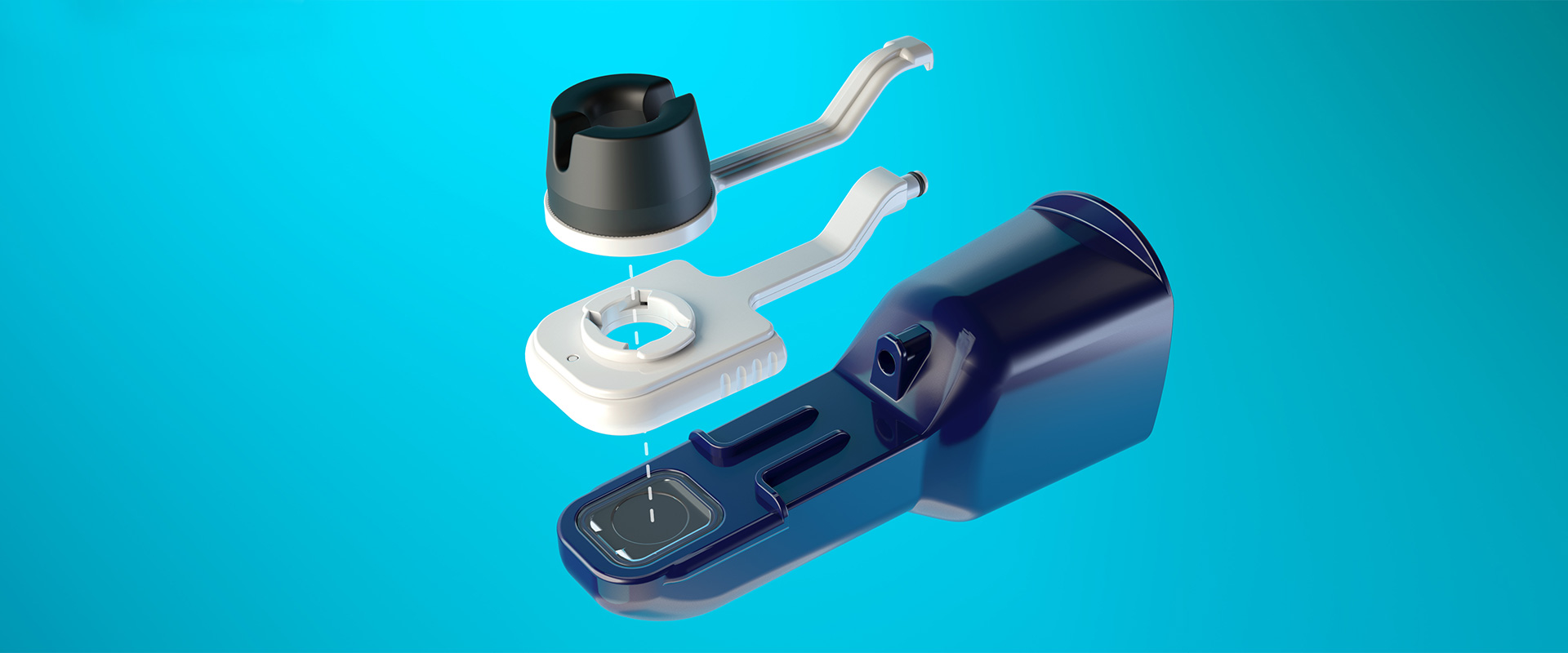
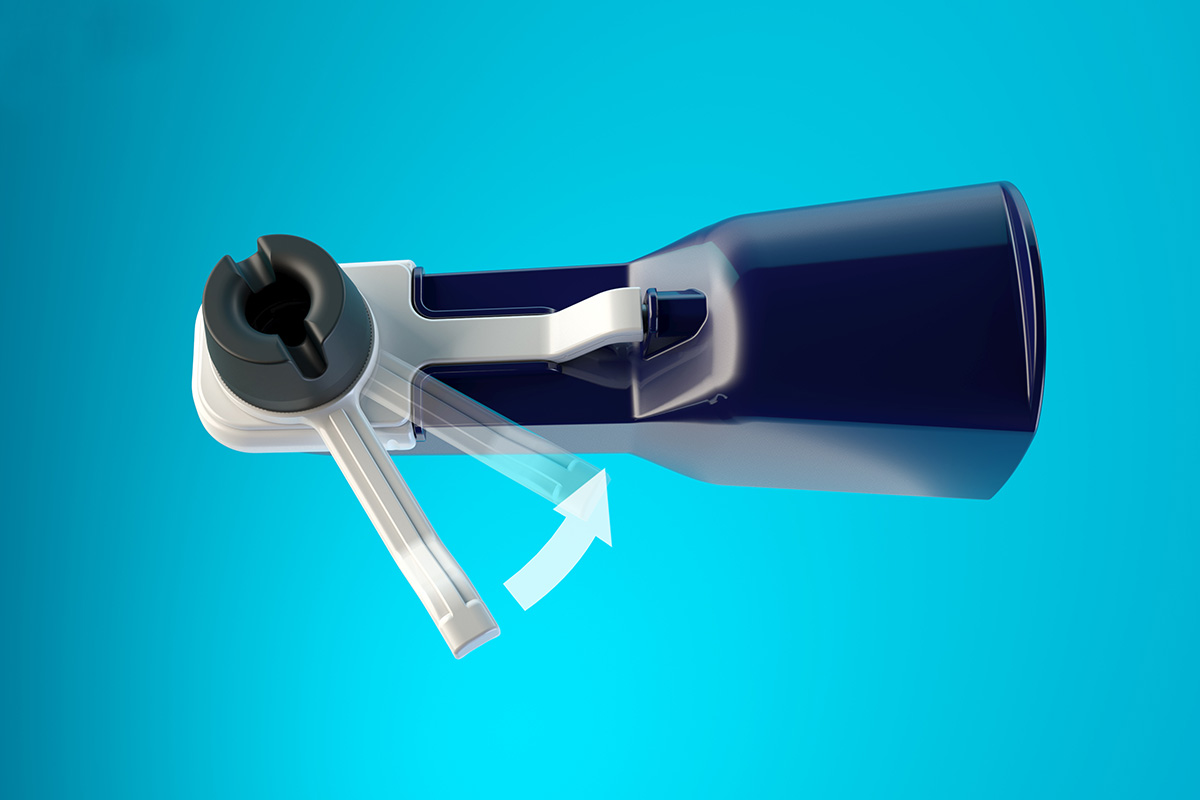
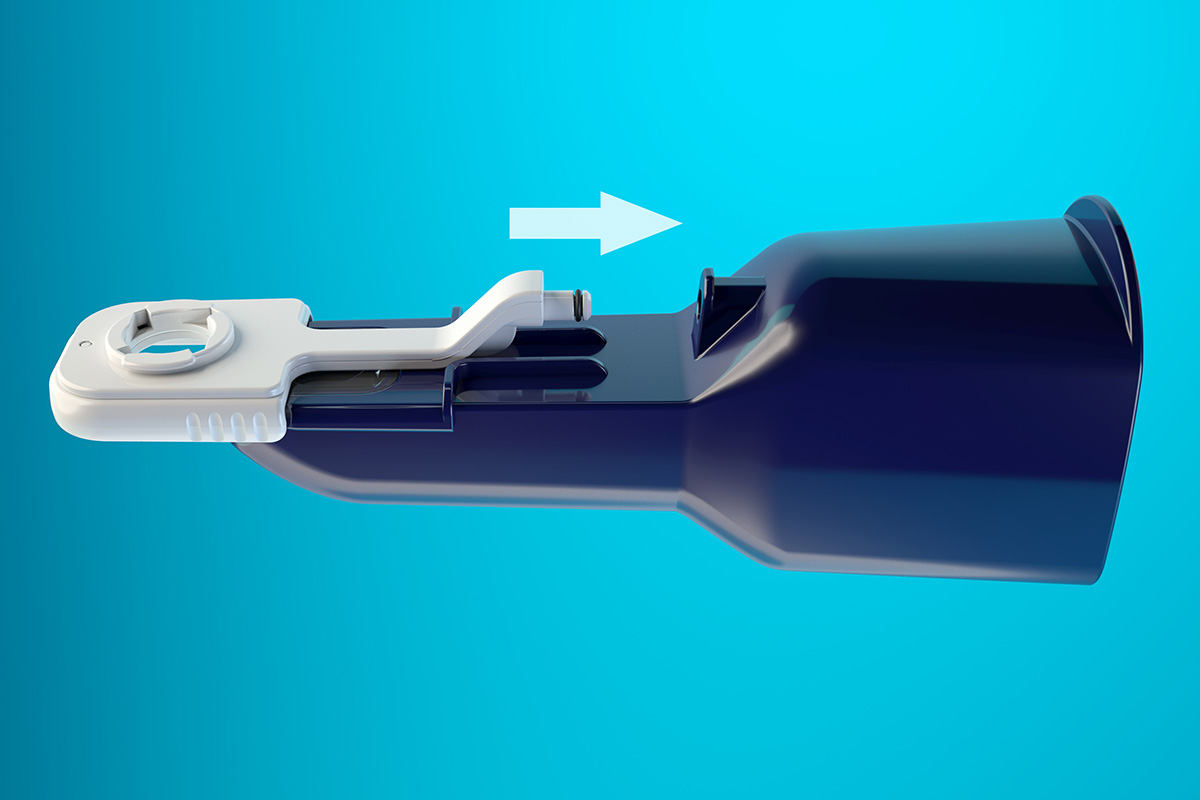
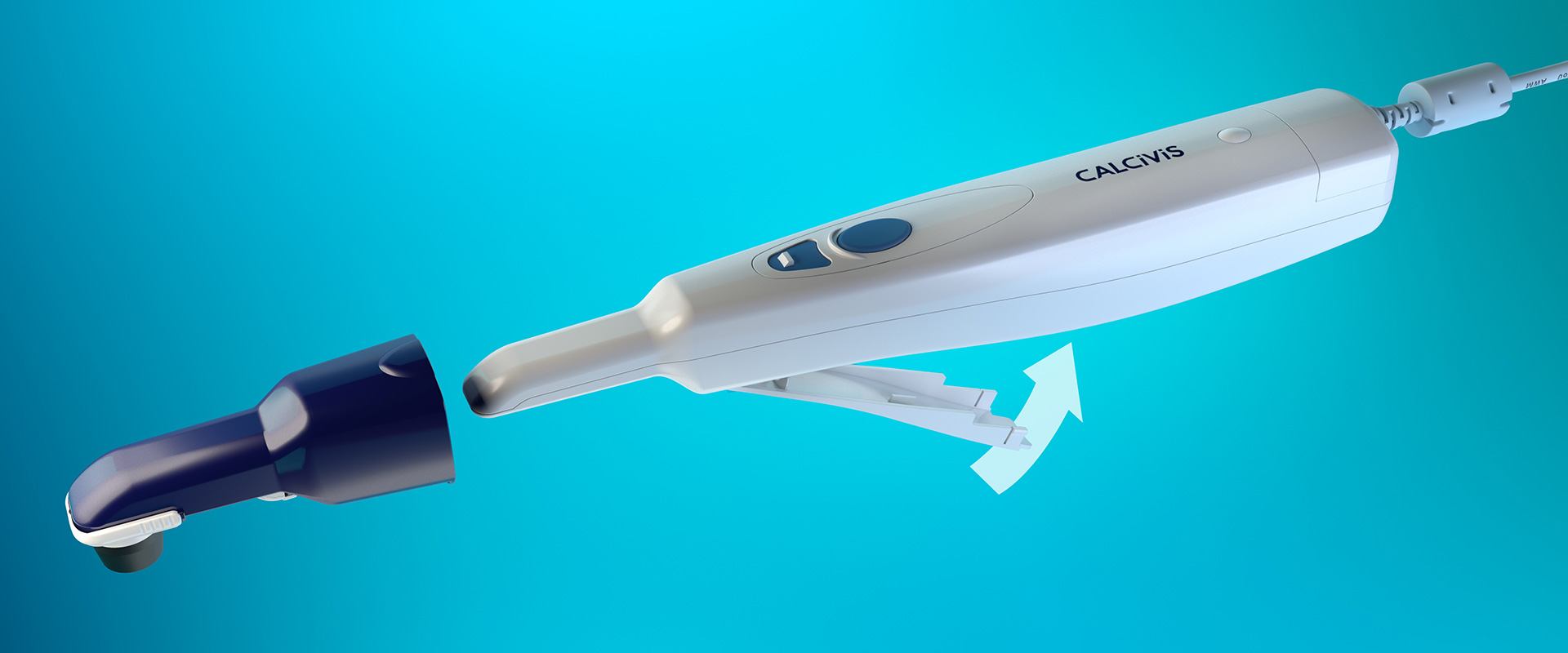
At all times we were conscious that the device had to fit into a patients mouth, so minimising the size of the applicator features was key.
With this general product architecture approved we identified alternative approaches to fluid delivery. The desire was to facilitate a convergence of fluid spray output at a nominal virtual point that would coincide with the tooth surface.
A series of physical prototypes were procured, using a state of the art process that creates parts to a high resolution, and tested for their effectiveness in protein fluid delivery.
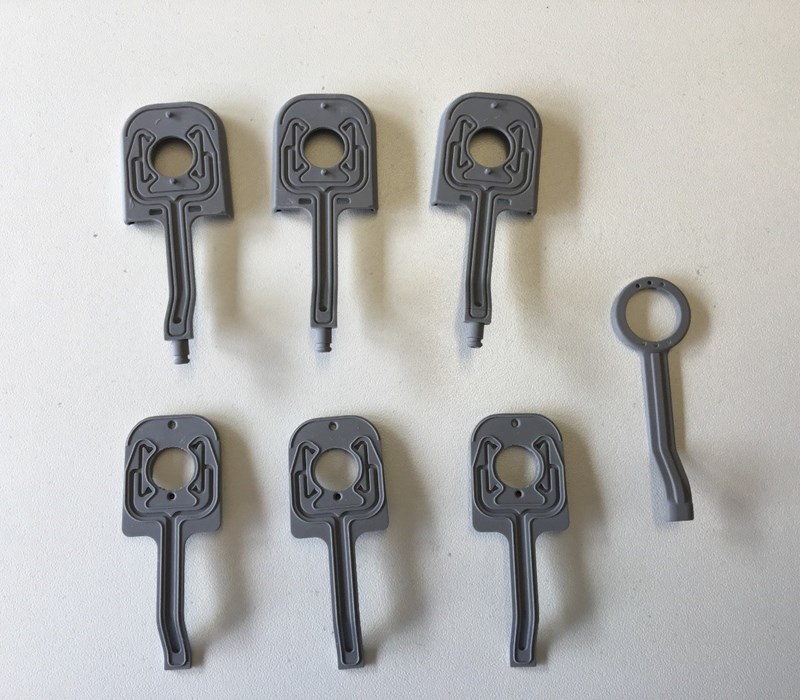
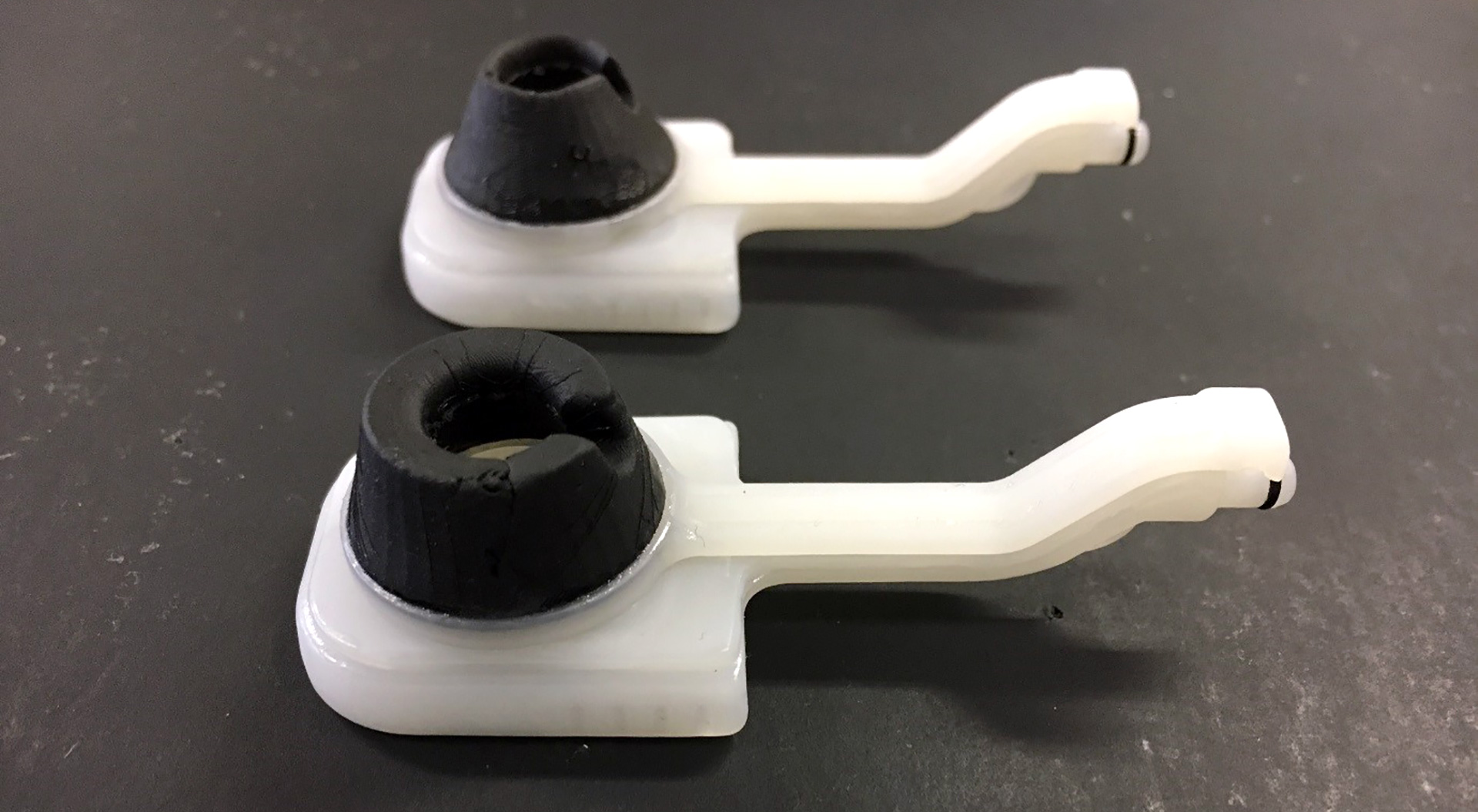
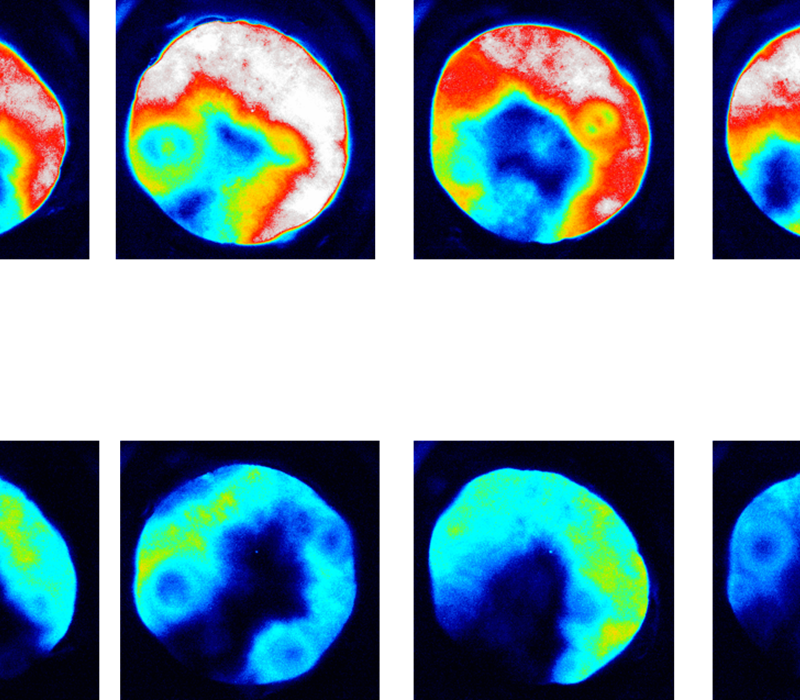
Options were scientifically assessed and compared with the previous design – from this iterative process solutions for both fluid delivery and light tightness were identified.
Slow motion photography proved very useful to record what the human eye could not see.
i4pd provided close support throughout the toolmaking process and supported Calcivis to review and report upon Tx samples.
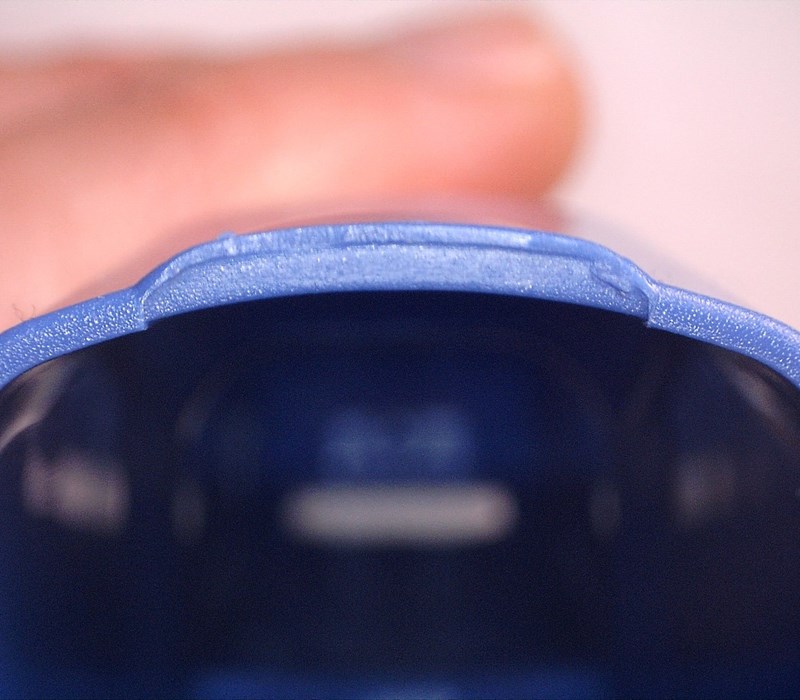
We like to find new, better and efficient ways of doing things. Contact us to discover how i4 Product Design can solve your current design challenge and take your product to the next level.
Copyright © 2024 i4 Product Design Ltd. All rights reserved. | Privacy Policy